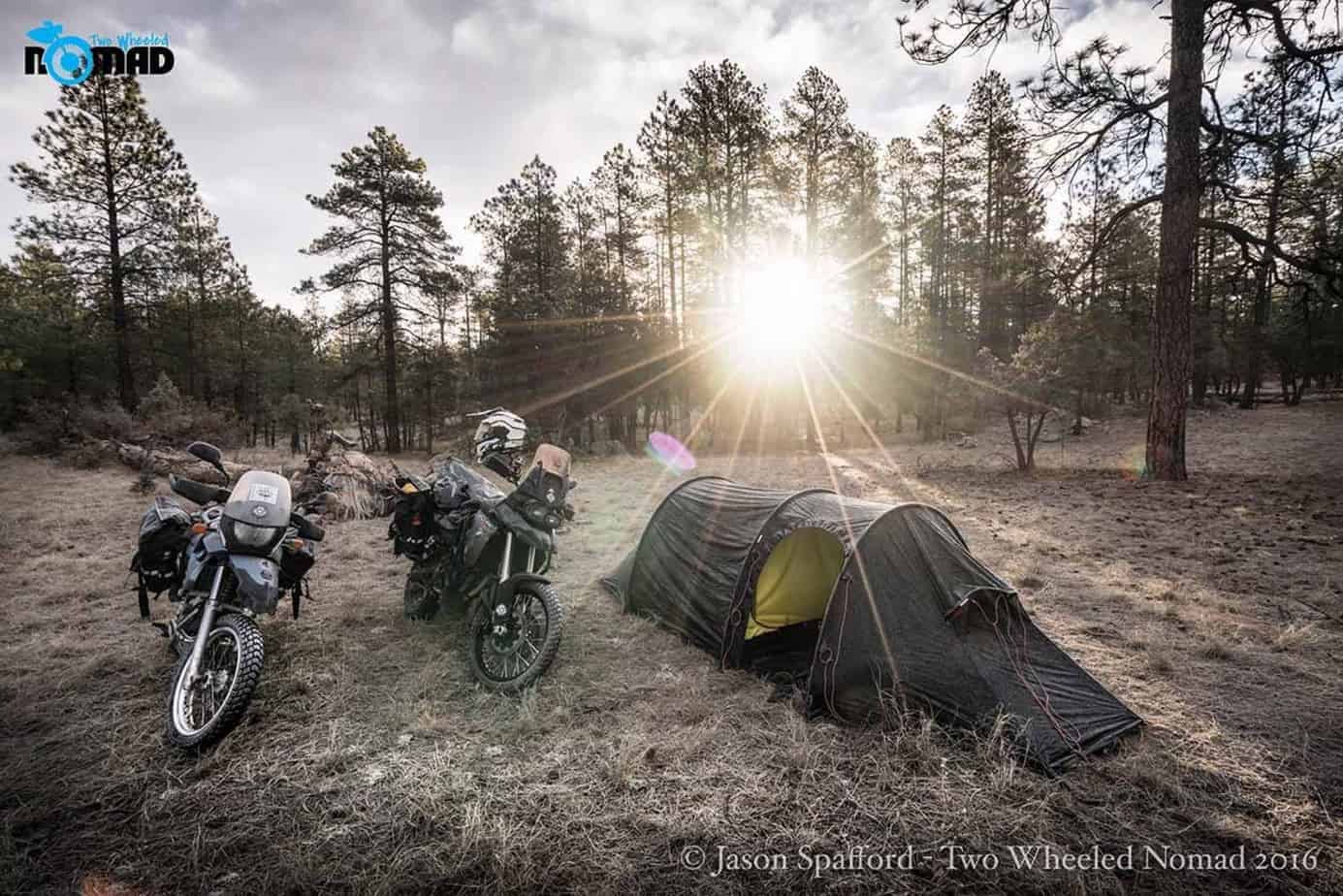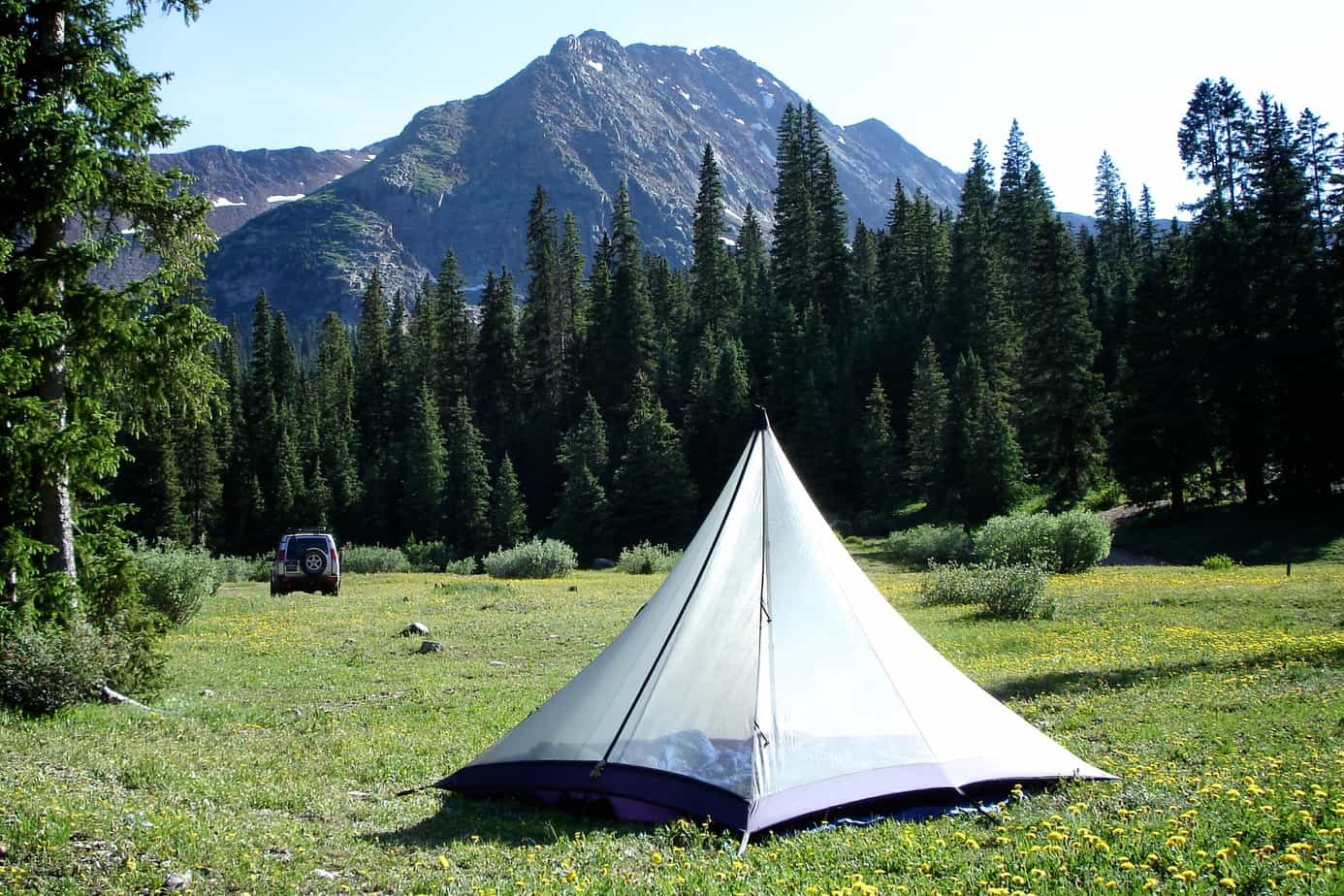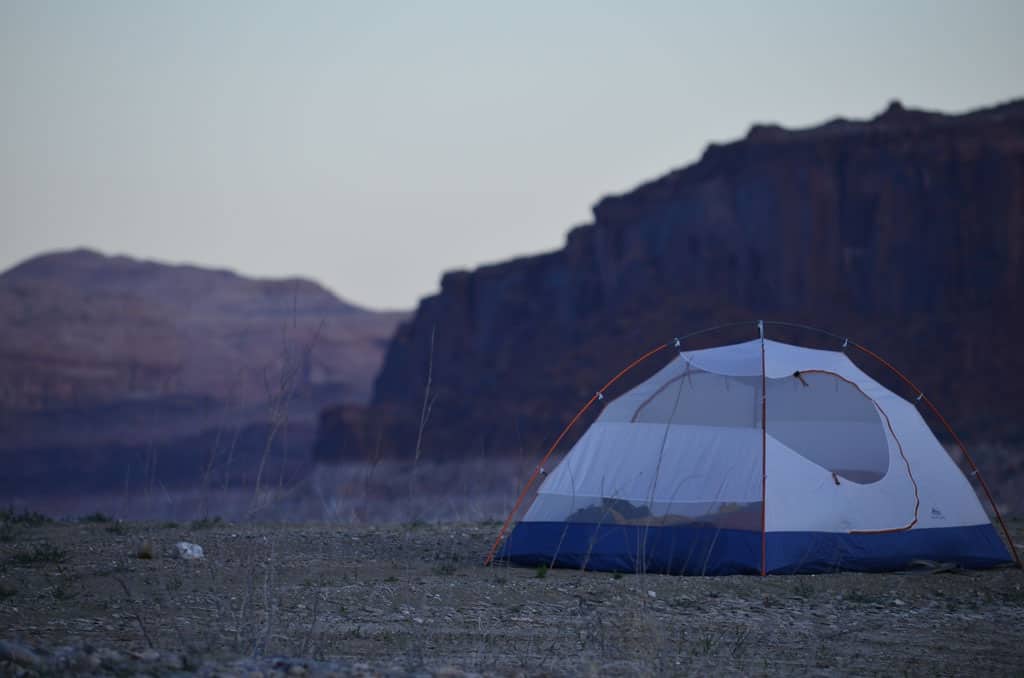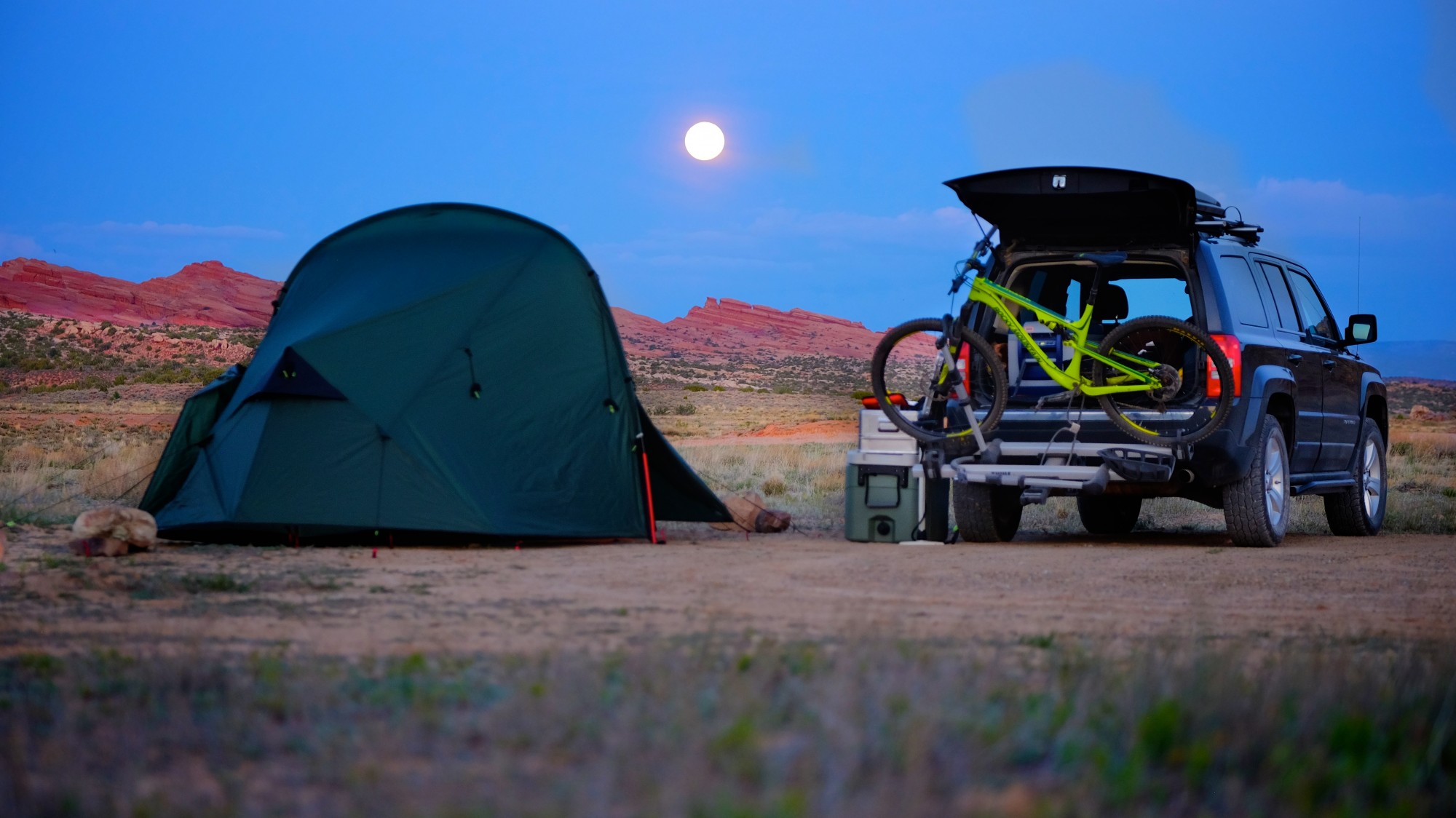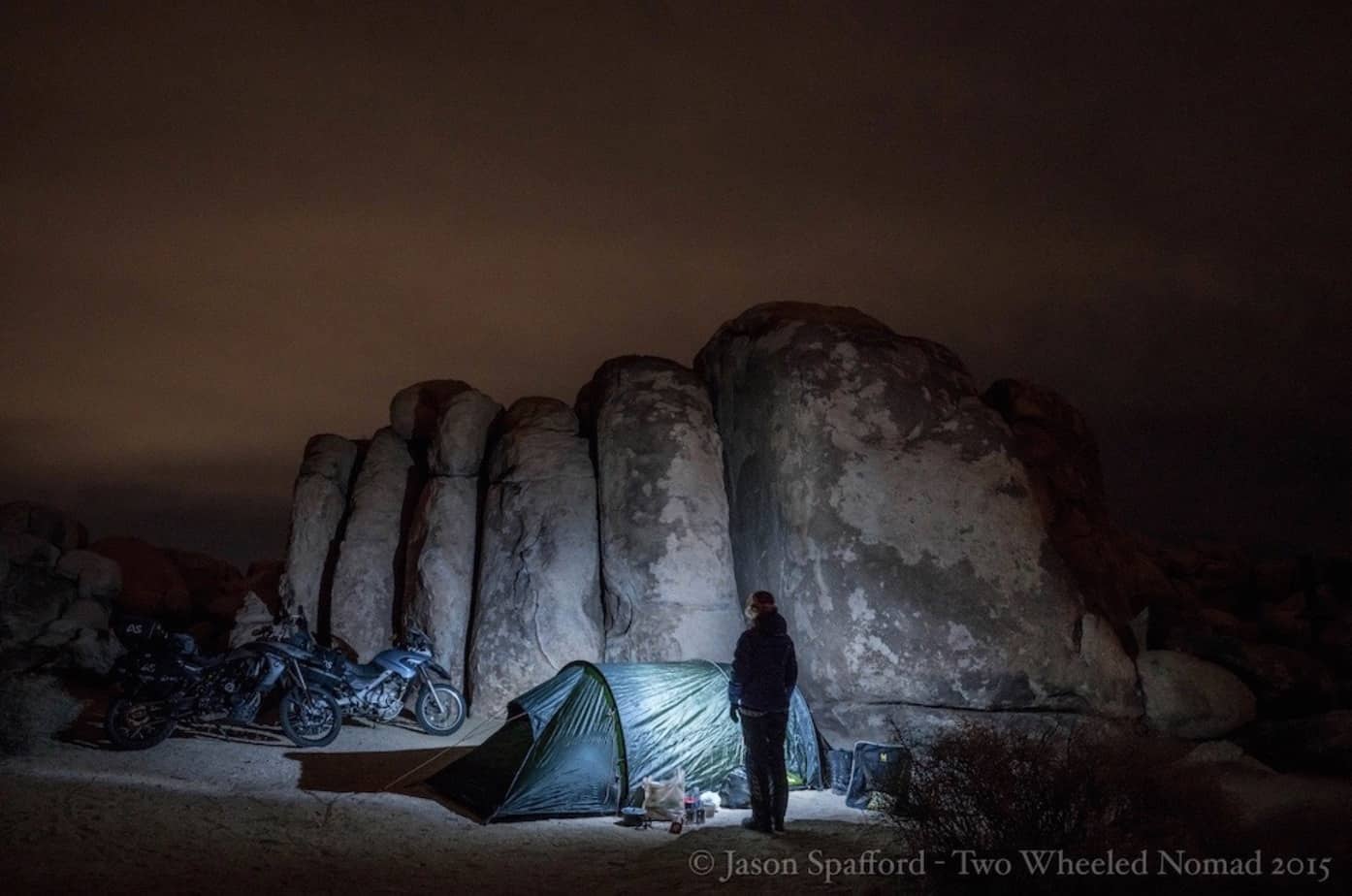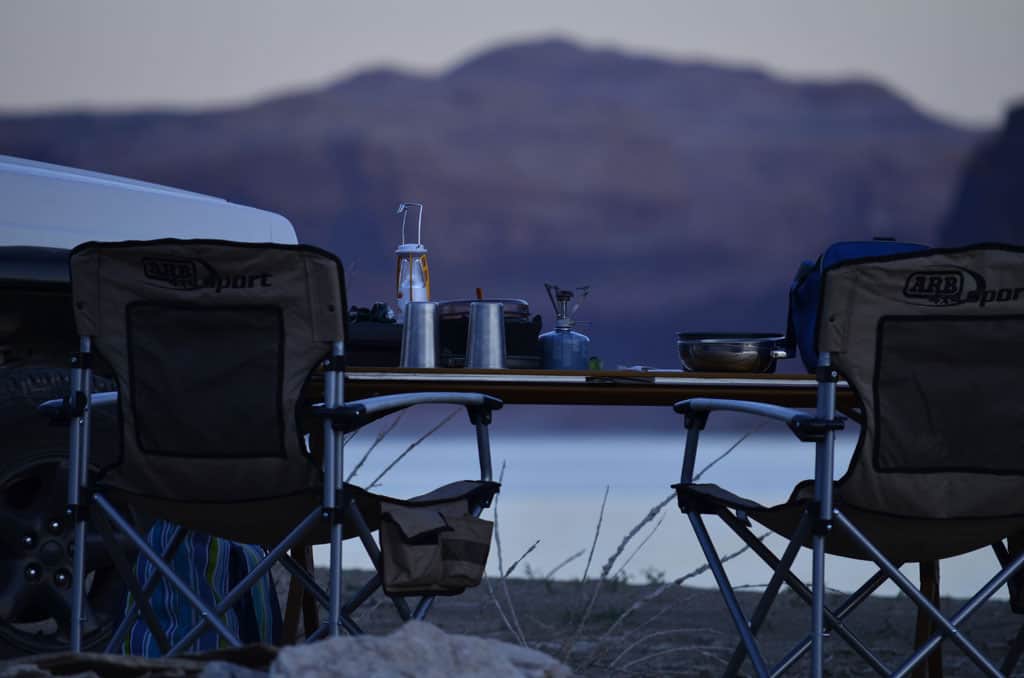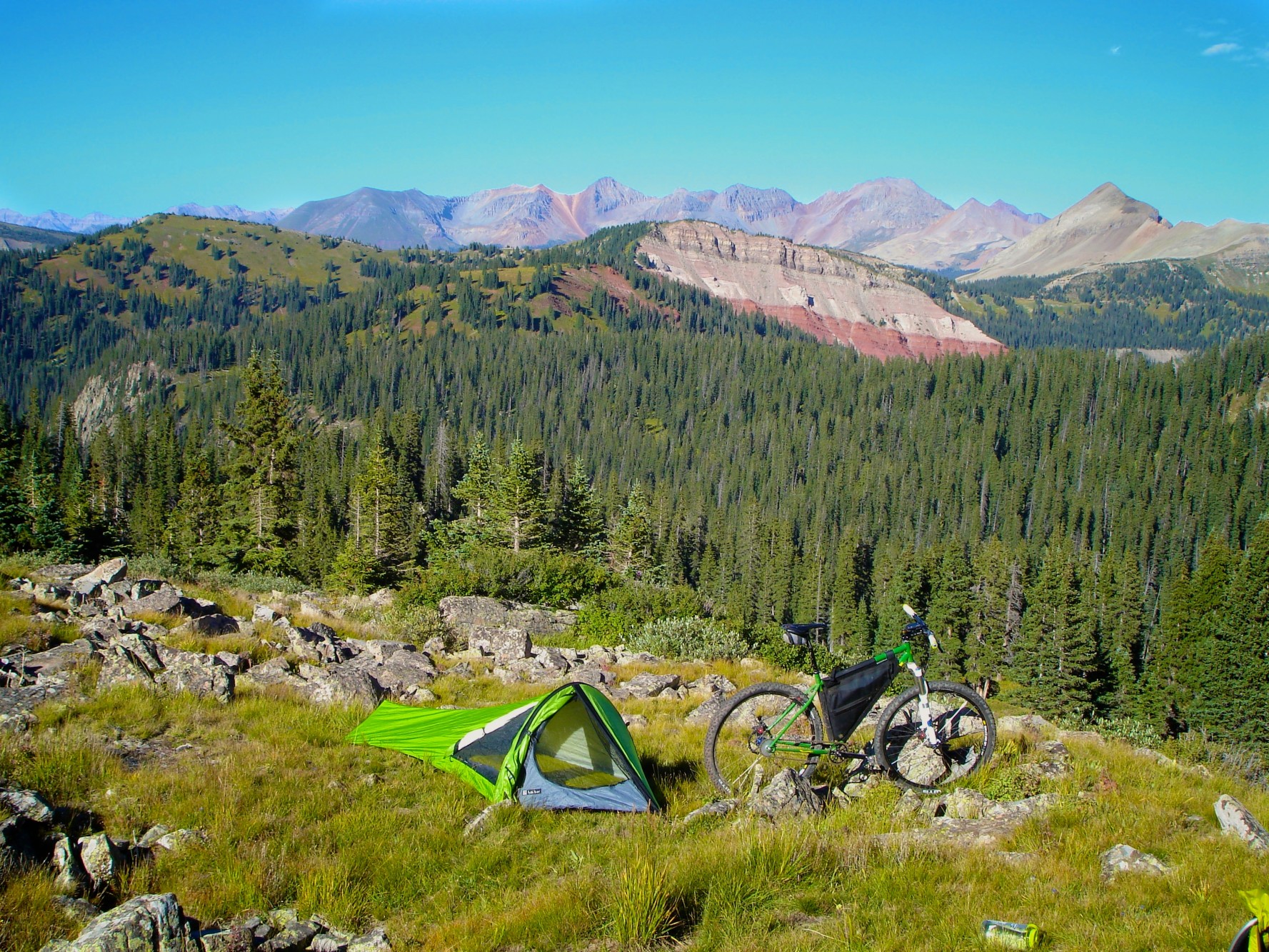After a great deal of introspection, I have concluded that I am a very particular individual. Odd as it sounds, that extends to how I select a campsite. I’ll be the first to admit I can drive my travel mates crazy, but to me there is far more to site selection than finding a level plot of earth to call home for the night. Just before I commit to a site I scrutinize all of the environmental variables that factor into my final decision. Do I over think it? Oh, most definitely.
My typical considerations are divided into two distinct categories. The most important assessment is relative to good environmental stewardship. As the world’s remote places become more crowded, how we use our shared lands is critical to maintaining access and the unspoiled nature of, well, nature. I also evaluate each potential camp spot to make sure it will provide the creature comforts that make it a cozy overnight stay. (Lead image credit: Chris Ram. Image below: Chris Cordes)
Morning Sun
If you’re camping in a part of the world prone to morning dew, frost, or light rain, setting up your camp where it catches the day’s first light can be the difference between breaking camp early, or late in the morning as you wait for everything to dry out. If you set up your tent on the western aspect of a bluff or mountain, not only will the morning be chilly, but it could be hours before the sun’s rays reach your camp. In hot climates, the opposite effect may be desired. Hiding your camp from morning light can keep your tent from becoming an oven. (Image credit below: Jason Spafford of twowheelednomad.com)
Bugs
When I lived in Alaska I often camped at a popular location called, Mosquito Meadow. It lived up to its namesake with thick clouds of blood thirsty mozzies and was nothing short of awful. Positioned on the edge of a bog and ringed with tall trees, it was a great example of where not to set up camp. To thwart swarms of bugs, your best bet is to camp where you have a chance of a small breeze to keep the flying insects on the move. Camping in an open meadow, on a ridge, or away from trees and water, will likely reduce the bug populations. (Image credit below: Christophe Noel)
Cold sinks
If you slept through science class you may have missed learning about thermal dynamics and how hot air rises and cold air sinks. The camper can leverage how air travels to either warm or cool a campsite. Canyons and mountains flow cool air from higher elevations, particularly in the morning. To avoid chilly temperatures, you can camp at a high point or on a ridge where warmer air is more likely to be found. A low depression can sometimes be ten degrees cooler than a higher point. It is much like the difference between camping directly in the sun, or in the shade. Cooler air can also be found in along rivers and streams. If you’re concerned about staying warm at night, knowing where cold air settles can make an otherwise miserable night more tolerable. (Image credit below: Sarah Ramm)
Drainages and flash floods
Every year people get swept away in flash floods. If you’re setting up camp along a wash or riparian area and notice a bunch of twisted branches and sticks pushed up against trees and rocks, you are in a potential flood zone. The misconception is that a flood only occurs if it rains directly on your camp. In the southwest, storms far over the horizon can drop enough moisture to create a whopper of a flood. You may never see the rain or the clouds that bring a wall of water and a tangle of debris into your camp. (Image credit below: Christophe Noel)
Wind
Regardless of the type of shelter you sleep in be it a tent, camper, or truck, wind is a potentially deadly factor. Every few years a camper dies when a tree or limb falls on them during the night. When winds increase, keep an eye on your surroundings and move out from under tree cover if necessary. Some trees are more prone to falling than others. A sequoia is a steadfast tree, but a dry cottonwood or ponderosa pine––not so much. Take a look around the forest floor. If you see a lot of downed trees and limbs, factor that into your site selection. Where falling foliage is not a concern, seek shelter behind natural wind breaks and avoid camping out in the open where wind is at its worst. (Image credit below: Jason Spafford of twowheelednomad.com)
Water
Whether it is a beach, river bank, or the shores of a pristine lake, the water’s edge is alluring. The temptation to camp close enough to it to hear the waves lapping on the sand, or rushing over rocks, is hard to resist, but in most cases that proximity to the water is less than ideal. All experts will advise users to distance themselves from the water’s edge, particularly if camping out of a vehicle which can drip fluids or heavily impact softer surfaces. This becomes less about hard rules, and more about an understanding of environmental impacts as sometimes it is the shore’s edge that offers the lowest chance of impact. Camping on a sandy beach may be better than on the vegetated ground further ashore. In short, just know that rolling your vehicle within inches of a pristine water source is not good land stewardship. If possible, camp at least 100 feet from wild water sources or where your impact is minimized. And don’t be that camper who washes dishes in a stream, river, or lake, even with your biodegradable soap. (Image credit below: Sarah Ramm)
Surface impact
Many places in the world are covered in a delicate layer of earth which can be irreparably damaged with as little as a footprint. In the high deserts it might be cryptobiotic soil which is made of microscopic organisms that create a protective crust holding the top layers of soil together. High alpine zones are often covered in a dense blanket of tiny plants, some of them decades old and extremely fragile. If you camp in these areas, try to find places previously used by other campers. If camping in a group, disperse in a wide area as to not concentrate your impact on a specific place. I’ve gone so far as to lay my sleeping bag right on a trail or road’s edge as to not damage the plant life in a high tundra. Always look for the most impact-resistant areas to set up. If camping in a pristine area never before used by other campers, when you depart, your presence there should be undetected. (Image credit below: Christophe Noel)
The room with a view
It goes without saying that nothing beats a good view. I have favorite haunts I visit almost exclusively because of the sunset or sunrise light shows they offer. Waking up to a colorful horizon, or watching alpenglow on high peaks at day’s end is reason enough to drive, hike, or ride to the best campsite. (Image credit below: Chris Cordes)
As a final note, there is an old saying that everyone should keep in mind any time they break camp: Leave it better than you found it. Not every backcountry user understands how precious our natural resources are and how easily spoiled they become with misuse. If you see an opportunity to improve a site by making it cleaner or restoring it to a more natural state, the effort to do so is well worth it in the long run.




